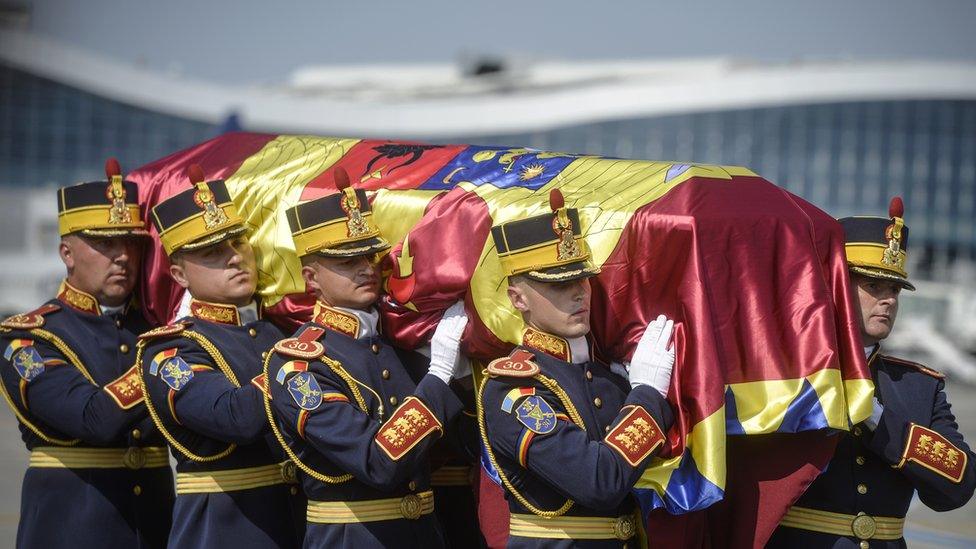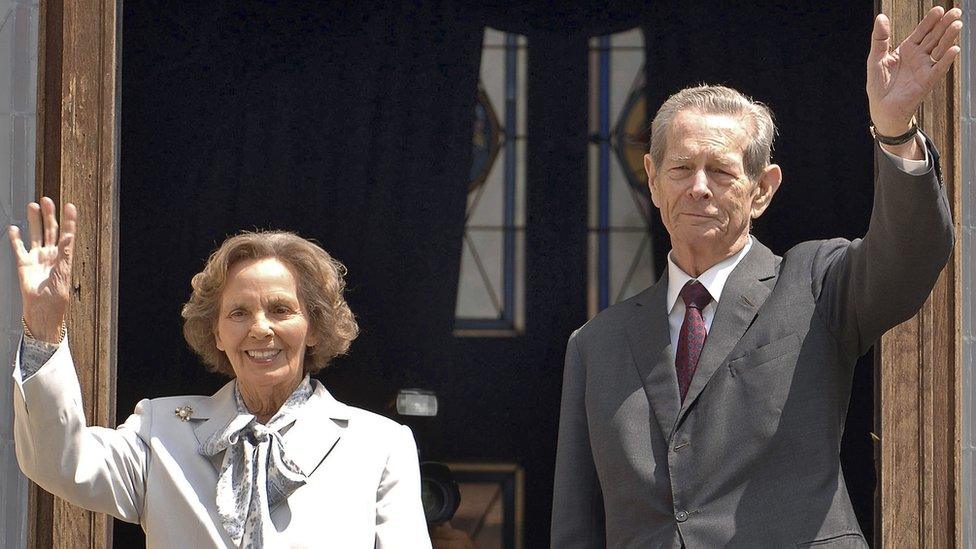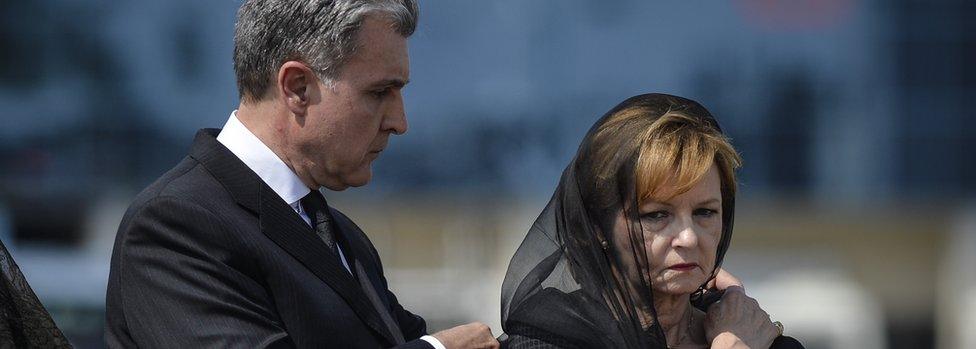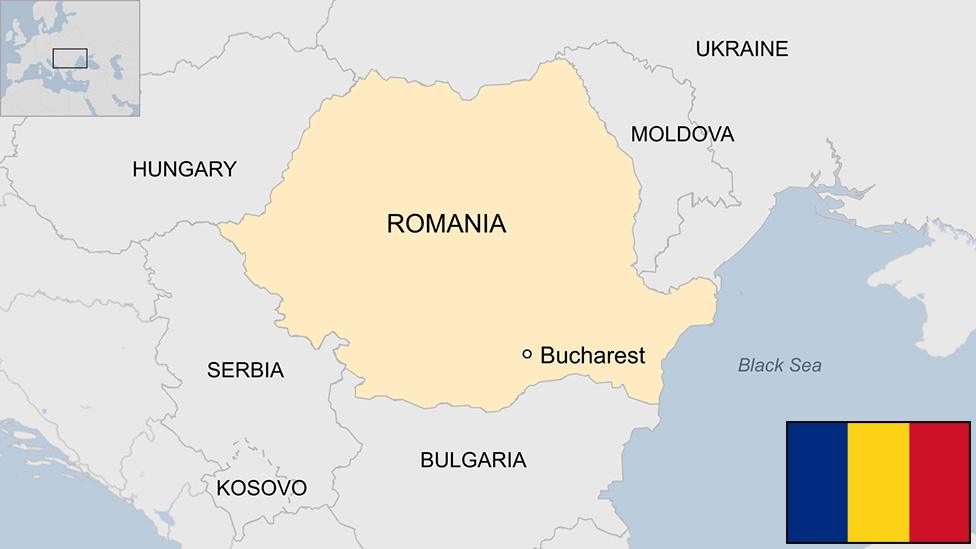Royal funeral for Romania's uncrowned Queen Anne
- Published

Anne's body lay in state for several days ahead of Saturday's royal funeral
A royal funeral takes place in central Romania on Saturday for a queen who was never crowned and never served and yet still commands full state honours.
Anne of Romania will be buried at Curtea de Arges. A day of mourning has been declared in both Romania and Moldova, and flags will fly at half-mast. She died in hospital in Switzerland on 1 August, aged 92.
In the past days, President Klaus Iohannis of Romania, Moldova's President Nicolae Timofti, many other statesmen and thousands of well-wishers, have paid their respects, as her coffin lay in state at Peles Castle at Sinaia and at the Royal Palace in Bucharest.
Her husband, former King Michael, now 95, and five daughters survive her. Michael will remain in Switzerland and miss the funeral, due to his frail health.
Why such affection for an uncrowned queen?

Anne and Michael married in 1948, a year after Communist authorities forced him to abdicate
It seems hard to believe that democratic Romania is going to so much trouble over a royal family that was only created in 1866, after the end of Ottoman rule, and then forced into exile in 1947.
Anne barely spoke Romanian, preferring her native French, and in a sense could hardly be called a queen, as she married the king after he lost his throne.
The answers lie in the extraordinary popularity of the royal couple among Romanians, and the careful diplomacy of the former king, queen, and their daughters since they were allowed back to Romania.
Although there is little prospect of restoration of the monarchy, polls suggest the royal family is the most trusted institution in Romania.
Anne always looked after her guests. She opened the door of the house when I came to interview her husband at their home in exile near Lake Geneva, Switzerland, in October 2011.
As we spoke, she arranged the tea and biscuits, and corrected her husband when his memory faltered. An earlier guest, Christian Mititelu, then head of the BBC's Romanian Service, remembers her arriving on her bicycle at the royal guest house, to bring fresh croissants in the morning.
Who was Romania's queen?

Anne met her husband in London after the end of World War Two
Princess Anne Antoinette Francoise Charlotte of Bourbon-Parma was born in Paris in 1923, grew up in Denmark and fled to New York when the Nazis occupied her homeland.
She worked as a nurse with the Free French forces in North Africa, Italy and France, then met King Michael at the wedding of Princess Elizabeth and Prince Philip in London in November 1947.
When Michael returned to Romania a month later (against the advice of Winston Churchill) to announce his engagement to her, the Communist authorities forced him to abdicate at gunpoint.
The couple were married in Athens in June 1948 and began a long and happy life in exile together. They were allowed back into Romania only after the fall of communism.
Romania's former king addresses parliament
Will Romania's royal family ever rule again?
In the chaos after the popular revolution of December 1989, even the restoration of the monarchy seemed possible.
Michael tried to visit in 1990, but was expelled by police.
Allowed into the country for three days at Easter 1992, more than a million people turned out to see him. Frightened by such enthusiasm, Socialist President Ion Iliescu banned any further visits.
Later the same year, a meeting of his supporters tried to encourage Michael to reclaim his throne. He listened, but said little.
The next President, Emil Constantinescu (1996-2000), restored their Romanian citizenship, but did little to promote a restoration of the monarchy. Ion Iliescu, back in power from 2000 to 2004, finally allowed the family to live in Romania and reclaim several properties.

Crown Princess Margaret will attend Saturday's royal funeral
The royal family divided their time between Romania and Switzerland.
"For twenty-six years, I have worked with my family to restore the Crown to usefulness and relevance in a post-communist society that lacked pride, knowledge of its own identity, and self-respect," Anne and Michael's eldest daughter, Crown Princess Margaret, told an audience at the Romanian Cultural Institute in London last month.
"It is therefore understandable that today, Romanians look to the Crown with respect, admiration and hope."
- Published16 March 2015

- Published18 December 2024

- Published25 October 2011
